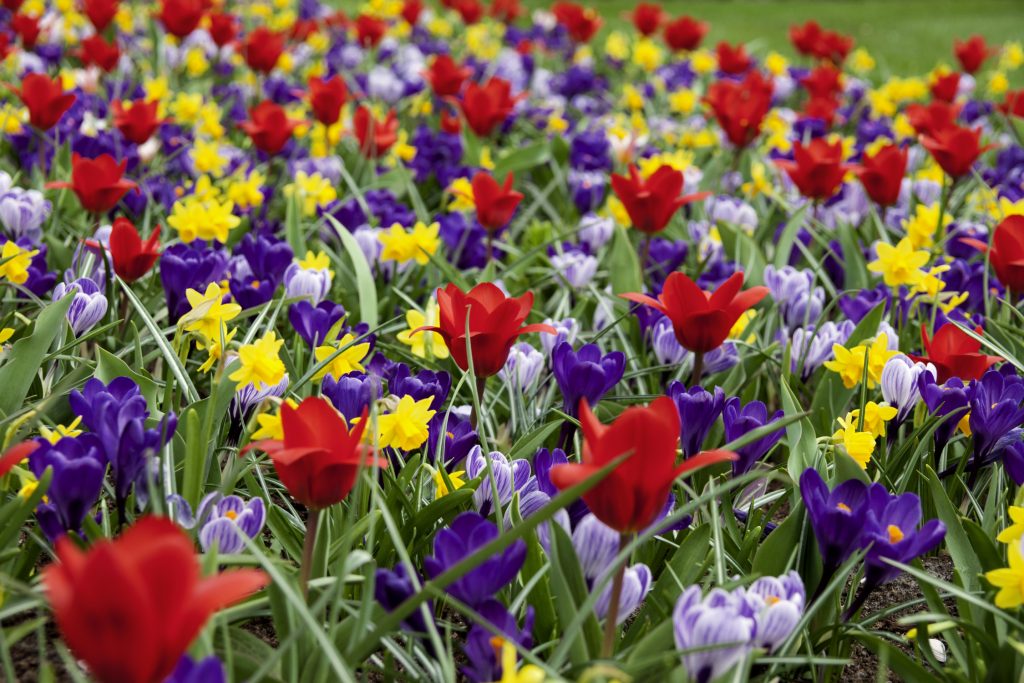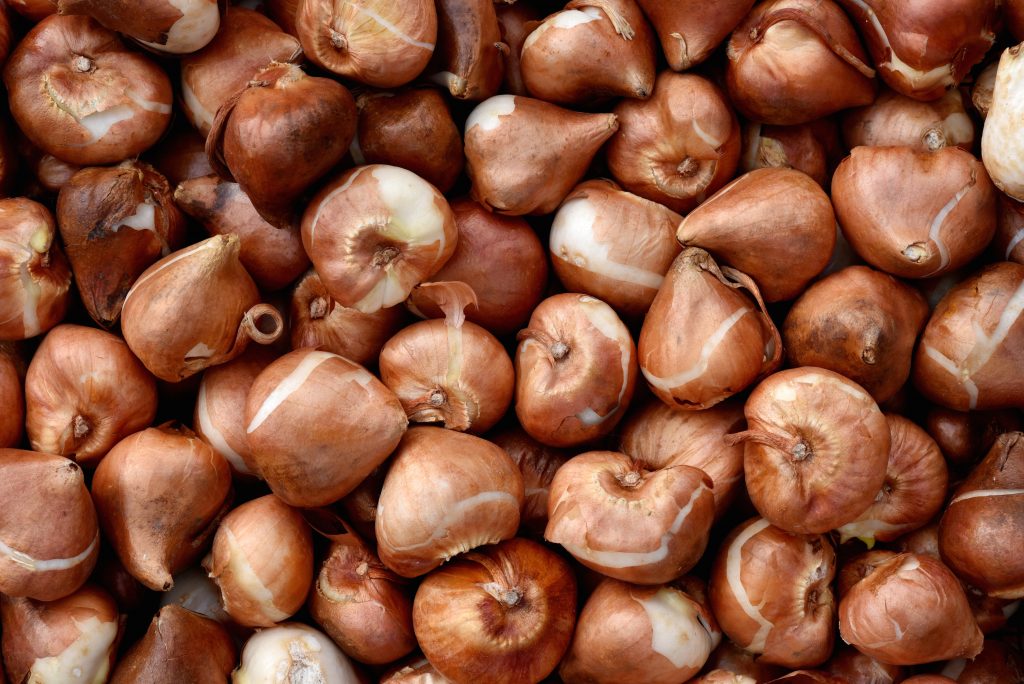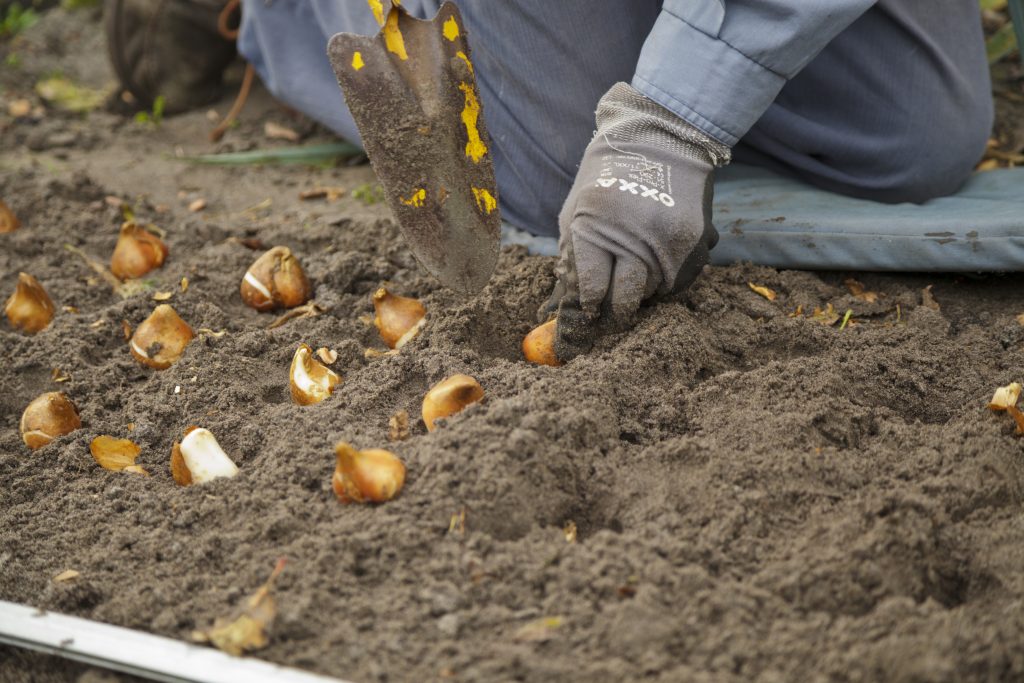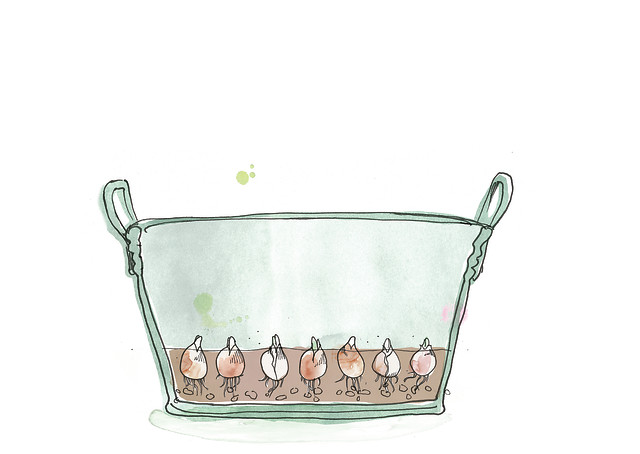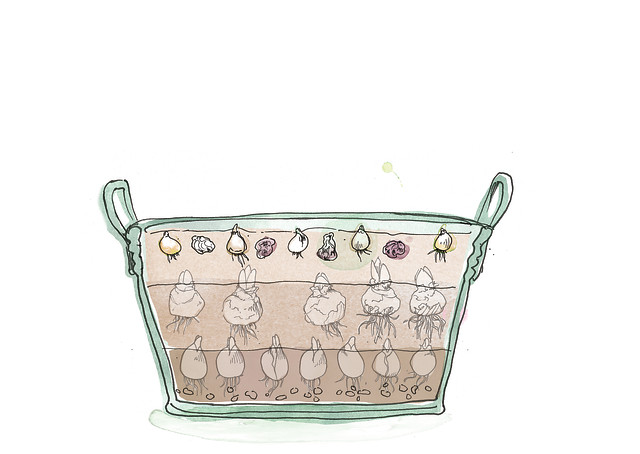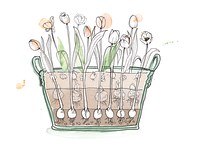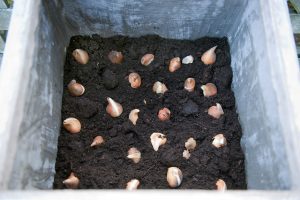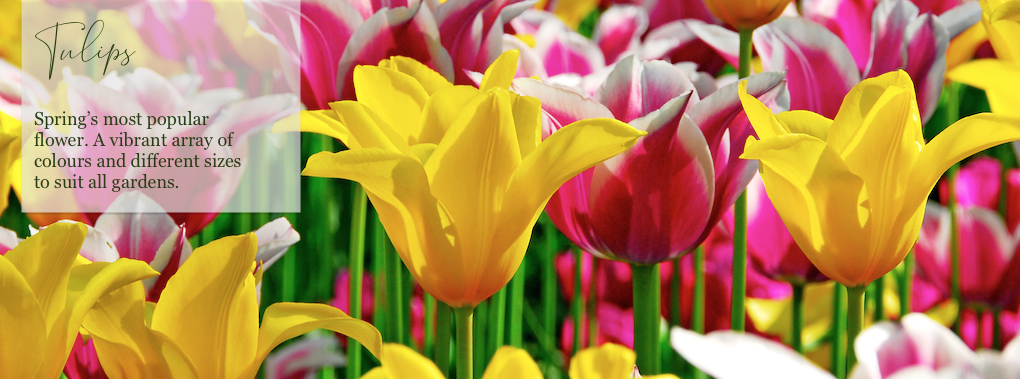
Planting tulips in the autumn months for a stunning display the next spring really is a satisfying job to do. Watch them grow and brighten up your garden pots or borders with the many different colours and styles we have to offer. Tulips come in different varieties from the standard single tulip to Lily-flowering tulips. There’s something for everyone!
When should I plant my tulips?
Tulips need to be planted in the Autumn, preferably in October/November, after the first frosts as this will wipe out any viral and fungal diseases that may be in the soil and which may infect the bulbs. Planting later in the year means there is less risk of disease and this is when the tulip bulbs start putting their roots down.
Planting tulips in the garden
Find a location with full sun or partial shade and dig a hole about 20cm (7-8″) deep allowing 12cm (4-5″) of soil above the tip of the tulip. If you find your garden has heavy soil, add horticultural grit or sand to the base of the hole. Ensure to plant the tulip bulbs with the pointy end facing upwards.
Plant the tulip bulbs, pointy end up, about 8cm (3″) apart and cover with soil. If you find your garden is short of space, you can plant your bulbs like layering a lasagne. Cover the first layer of bulbs with a thin layer of soil, then add another layer of bulbs before filling in the hole. After planting, water the Tulips well, gently soaking the soil to settle it around the bulbs.
Planting tulips in pots
If you are planting your tulips in pots, find a large container and fill it with good-quality, multi-purpose compost. Ensure there is adequate draining holes. Again, plant 12cm (4-5″) below the soil surface. To get full and luscious pots full of spring flowers, we recommend layering your bulbs like making a lasagne. The Dutch call this a bulb lasagne. Simply plant your bulbs deeper to start with, with the largest or latest flowering bulbs further down, moving to the smallest and earliest flowering in the top layer. The shoots from the lower bulbs will find their way around the other bulbs. The first layer can go as deep as 28-30cm (11-12″), then cover them over with 5cm (2″) of compost, before you place the next layer of bulbs. After planting, water the Tulips well, gently soaking the soil to settle it around the bulbs.
Caring for tulips
- Deadhead the flowers during the season before the petals fall off.
- After flowering has finished for the season leave the foliage in place; don’t cut it off. The leaves will gather sunlight, create food through photosynthesis and strengthen the bulbs for the future.
- Water as needed during active growth periods.
- By mid summer the leaves may yellow and die back. Foliage may be removed at this point.
- Some tulips flower well for one year and then need lifting out of the soil and carefully stored if you want to use them again. Once everything has fully died back, you can lift them and store them in a dark, dry, airy place over summer, allowing the air to circulate around them. They can then be replanted in the Autumn.
- If you want your bulbs to last, you could feed them with a Slow Release Fertiliser in early Spring.
